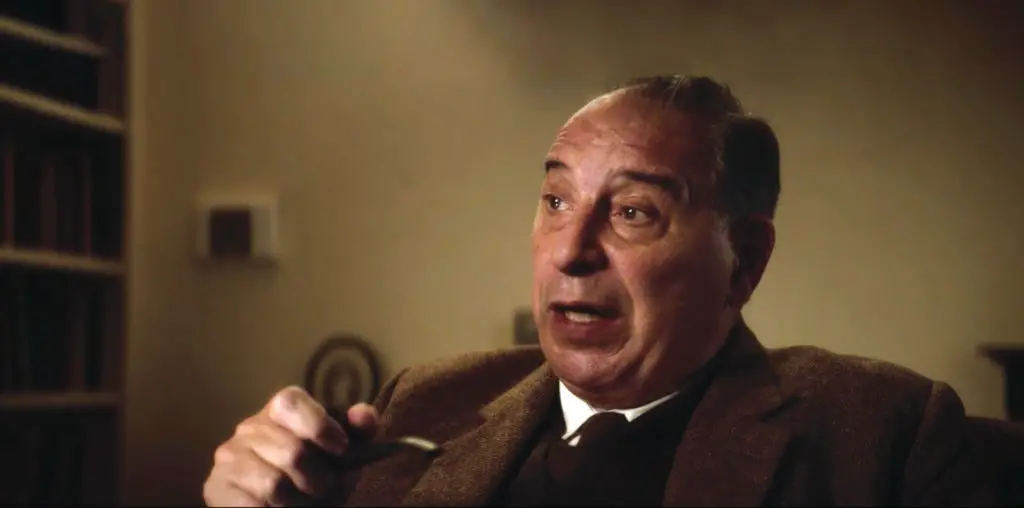
Turner Classic Movies’s first in-house produced documentary, “Edge of Outside”, feels like the last class session before a big test in a cinema course. All big names are laid out for the viewer, not just in bits of profiles, but in interviews as well. Peter Bogdanovich, Peter Biskind, Martin Scorsese, Spike Lee. They know what they talk about. Then we rush on, with lip service given to D.W. Griffith as the first true independent filmmaker in a generally formless industry at that time. There, then, is the big question: Can independent film also be identified as those filmmakers with a fiercely singular vision whose motion pictures look far different than what’s offered by the studio system? What does that mean to those indie filmmakers everywhere today, completely outside of Hollywood trying to make their own dreams happen, to tell that one story they’ve been passionate about for years on end?
The first few moments where “Edge of Outside” stops to breathe, and pant heavily at perceived greatness is with Samuel Fuller, whose films had dark, tireless energy and always something to say, through actors and ideas that never cease to make audiences pay attention. In fact, one of the highlights here is when Christa L. Fuller gives a full-throated, husky impersonation of her husband in speaking to Darryl Zanuck. There’s a fairly good explanation of Fuller’s style of filmmaking, such as in compromising only to a certain extent with Zanuck on a film called “Forty Guns”, because Zanuck didn’t want Barbara Stanwyck’s character to die, as it wouldn’t sell well.
These sorts of examinations are spread throughout this all-too-brief documentary, only all-too-brief because of the inherent disorganization within, more concerned at times with the shadowy, out-of-focus shots of a frustrated young man in a sad-looking, lonely apartment with photos of directors taped to the walls, and a TV occasionally featuring archival interviews with Fuller and Orson Welles, the bridge between interviews it would seem, but moreso just having something else to show while any number of personalities are talking. To be sure, the archival interviews are useful, as who, besides many biographers, can talk about Welles’ life better than Welles? While Welles is deserving of the greatest respect in the history of the movies, it is a big question mark as to why he is given so much time. True that he did fight like hell to make the movies he wanted and often lost those battles, but there’s Spike Lee at the beginning, talking briefly about Oscar Micheaux, and there’s nothing told about him in how he was an independent filmmaker, in how he navigated his career in the movies, just that he was one of many paved the way for African-American filmmakers like Lee. A channel like Turner Classic Movies is, I believe, already watched by people who know some of who Welles is, of what Hitchcock is known for. What about more moments covering Fuller’s dealings with other people besides Zanuck?
John Cassavetes is given his proper time as well, through Gena Rowlands, Seymour Cassel, Peter Falk, and composer Bo Harwood, but disorganization reigns as Cassavetes is introduced into the fold, but soon chucked aside in favor of a discussion about the ever-widening chasm between filmmakers and executives with MBAs, but no creative experience in film (Admittedly, however, filmmaker Alexandre Rockwell has the most entertaining story on the best producer he worked with). It’s not until a few moments later, until we’ve nearly forgotten that Cassavetes was discussed (and who could ever properly concentrate on Cassavetes when clips from “Reservoir Dogs” and “Pulp Fiction” are featured in a tiny moment for Tarantino?), that it all comes full-circle back to him. The obvious theme of “Edge of Outside” is that no matter what kind of film someone has in mind, they try to make it. Budgets may be far less than they had hoped for when they go out searching for funds. Actors they wanted may no longer be available or even willing to work with them. But they try. They bite and claw and scratch at all the obstacles they face. They cajole, charm, and convince those people with the cash that the movie they want to make is the one that the investor will be fortunate for having put his or her money into it.
“Edge of Outside” shows a lot of that with the film clips and the interviews that chronicle the passion and sweat that goes into making films that adhere to a strict, singular vision and are sometimes all the better for it. But Welles, Fuller, Nicholas Ray, and Sam Peckinpah are all of different sensibilities. This is one documentary where a straight historical line feels so necessary as one filmmaker and then another is referenced and then back to that first filmmaker and on to a third filmmaker. What circumstances in the industry allowed Nicholas Ray to operate? Who let him cross that path? When had Sam Peckinpah started encountering resistance from studios who felt it necessary to hire him only because of the previous well-known films he had made? With people like historian David Thomson and film professor Ray Carney also talking up their expertise, it’s not difficult to spend a few minutes on that. But ultimately, it turns out to be just that. Difficult.
